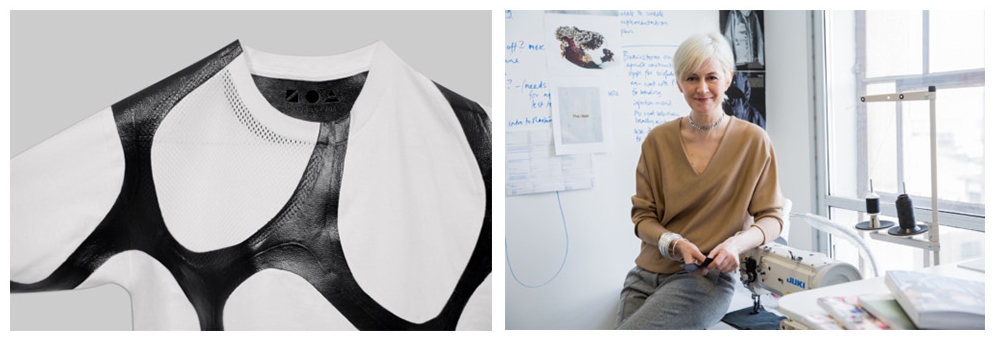Founded in 2011 Modern Meadow, a spin-out company of 3D bioprinting developer Organovo (NASDAQ:ONVO), has been working on genetically engineered collagen to “grow” animal-friendly meat and materials.
Now, as part of the Items: Is Fashion Modern? exhibit at The Museum of Modern Art (MoMA) in New York, the company reveals ZOA – a fashion brand dedicated to the world’s first biofabricated leather.
Modern Meadow initially claimed to use 3D bioprinting, however the company are no longer claiming to do this and now acknowledge they have “never used 3D printing” according to Natalia Krasnodebska, Modern Meadow’s Head of Communications. However, the company remains focused on fabrication.
Any shape, any mold, any density
The technology applied to ZOA by Modern Meadow is based on DNA editing technique not unlike CRISPR. Taking the base strands of a DNA molecule’s double helix, Modern Meadow researchers replace the middle sequences to tailor-make cells that behave in a certain way.

With this method, the material is “able to be any density” and “hold to any mold” creating a whole new design experience.
Dave Williamson, Chief Technology Officer at Modern Meadow, explains, “Our biofabrication platform offers us amazing headroom for innovation. Best of all, it’s eminently scaleable.”
Suzanne Lee, Modern Meadow Chief Creative Officer adds, “Our technology enables designers to explore materials in exciting new ways, enabling never-seen-before functionality, aesthetics and performance possibilities.”
The future of fabrics?
Awareness of the environmental consequences of the meat industry also led to an increase in veganism. If this trend, as some believe, is to continue, eventually companies like Modern Meadow could be ahead of the curve in a society that demands less raw material with a minimal footprint.
However, currently the costs involved to 3D print meat remain prohibitive. Which may explain why Modern Meadow have dropped 3D printing from their marketing material.

In an article for Business of Fashion Rob Carlson, managing director of Bioeconomy Capital – a firm that invests in industrial biotechnology, says, “It is hard to say where this [ZOA] is going to go, but you could easily imagine bespoke fabrics and materials that are grown for fashion houses and that are only available from those sources.”
“I expect that we will wind up with further product differentiation with materials from Gucci and Hermès, where the brands are literally incorporated into the genomes of the cells that make the materials.”
A graphic t-shirt made from ZOA fabric will be exhibited at MoMA 1st October 2017 through 28th January 2018.
To stay up to date in all the latest from 3D biotechnology – sign up to the 3D Printing Industry newsletter, and find us on Facebook and Twitter.
Subscribe to our 3D printing jobs site here.
Featured image shows a fabricated material. Photo via ZOA.is



